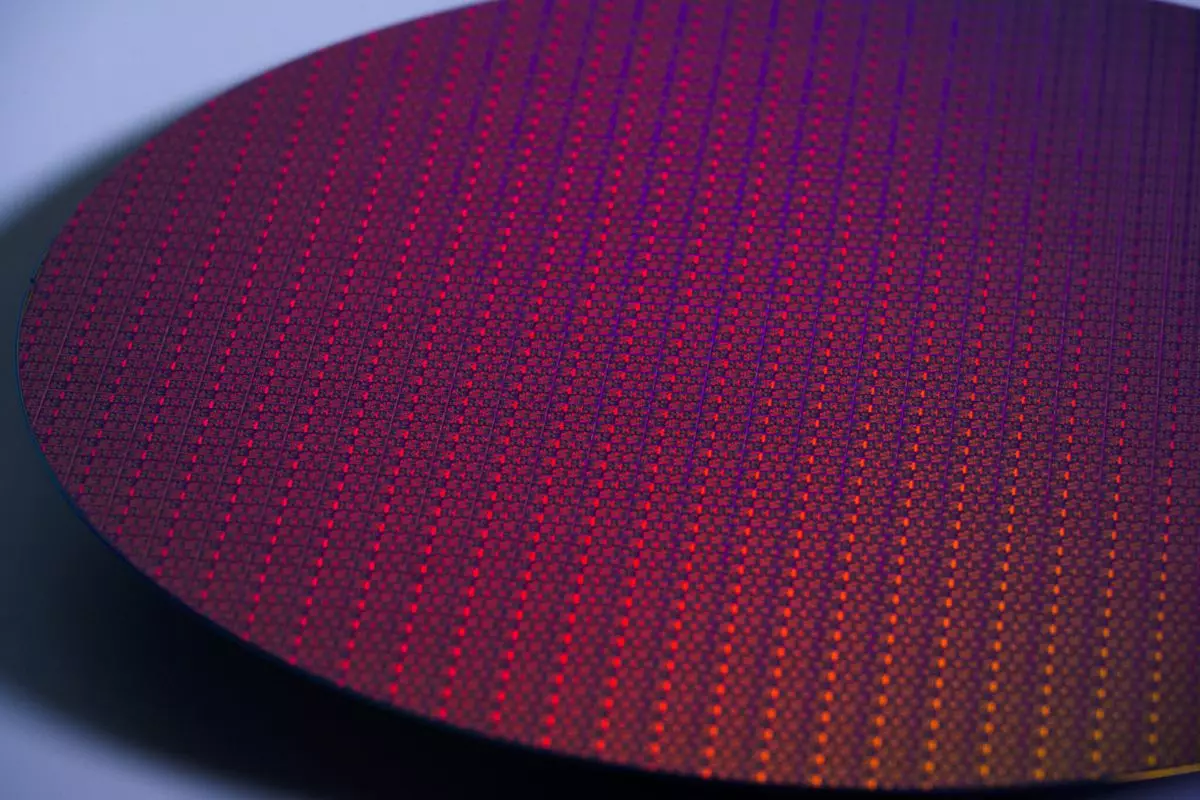Intel’s current positioning in the semiconductor industry is both critical and compelling. As it grapples with its competitors and the intricacies of its foundry business, the narrative is anything but straightforward. The discussion surrounding Intel’s dependency on Taiwan Semiconductor Manufacturing Company (TSMC) raises pivotal questions about the company’s autonomy and strategic direction. Previously stamped with the ambition to eliminate reliance on TSMC, the latest insights reveal that 30% of Intel’s wafers are still produced by this powerhouse, a detail that, while attention-grabbing, raises eyebrows concerning the company’s long-term aspirations and operational capabilities.
At a recent technology conference, John Pitzer, Intel’s VP of corporate planning and investor relations, openly reflected on this ongoing dilemma. Notably, he remarked on a shifting mindset within the company: “We think it is always good to have at least some of our wafers with TSMC. They are a great supplier.” This acknowledgment delineates a shift from a once fervent goal of complete independence to an acceptance that strategic partnerships can foster competitive innovation—though the implications of this strategy warrant further scrutiny.
Strategic Partnerships vs. In-House Production
Delving into the mechanics of wafer production, it’s evident that while Intel has plans to ramp up its in-house capabilities, the current reliance on TSMC has resulted in a dual-edge sword. On one hand, collaboration with a reputable foundry ensures a steady influx of advanced silicon; on the other, this dependence bleeds into margins, affecting profitability. As Pitzer stated, “We are working through that. Is it 20%? Is it 15%?” The ambiguity in this query speaks volumes about the uncertainty permeating Intel’s ranks under the stewardship of interim CEOs Dave Zinsner and Michelle Johnston Holthaus. The transitional leadership phase leaves the company at a historical crossroads—an era defined by change, but one fraught with hesitation.
Ex-CEO Pat Gelsinger articulated ambitious projections to minimize this dependency, indicating an internal ethos oriented toward reclaiming a more independent foundry model. However, with Gelsinger’s departure influencing the trajectory, it’s worth questioning whether a path back to manufacturing sovereignty is plausible or merely aspirational.
The Competitive Dynamics at Play
The competitive landscape is increasingly intricate. Intel’s ongoing reliance on TSMC not only cedes some control but also inadvertently fuels competition between the two entities. The notion that collaboration can exist alongside rivalry is compelling but paradoxical. The emergence of rumors surrounding potential acquisitions—ranging from TSMC’s interest in Intel’s fabs to Broadcom eyeing the semiconductor giant—amplifies the stakes at play.
Moreover, the discovery of TSMC potentially taking the lead in several advanced manufacturing technologies poses a dual threat and opportunity for Intel. Maintaining an essential relationship with TSMC could spur innovation through competition, but it also perpetuates a narrative of vulnerability that Intel must grapple with internally.
Future Prospects and Market Implications
As patrons of the technology sphere keep a watchful eye on Intel’s maneuvers, the implications of its foundry strategy stretch far beyond company margins and chairmanship changes. Intel’s decisions will likely influence market dynamics, competitive positioning, and, undoubtedly, innovation trajectories across the tech industry. The chip manufacturing sector is not merely a tactical battlefield; it’s a catalyst for broader economic trends, impacting everything from consumer tech to the automotive sector.
The ongoing situation with Intel represents a chapter in the larger story of semiconductor evolution. With a market that demands agility and speed, Intel faces increasing pressures not only to sustain its identity but also to outperform rivals like AMD and Nvidia, who are not encumbered by similar structural dilemmas.
While some may argue that dependence on a foundry like TSMC dilutes Intel’s market prowess, others might see it as a strategic play to enhance competitive innovation capabilities. In either case, the dialog surrounding Intel’s foundry operations is destined to evolve, and its outcome will resonate across the technology landscape in ways that are yet to be fully realized.

